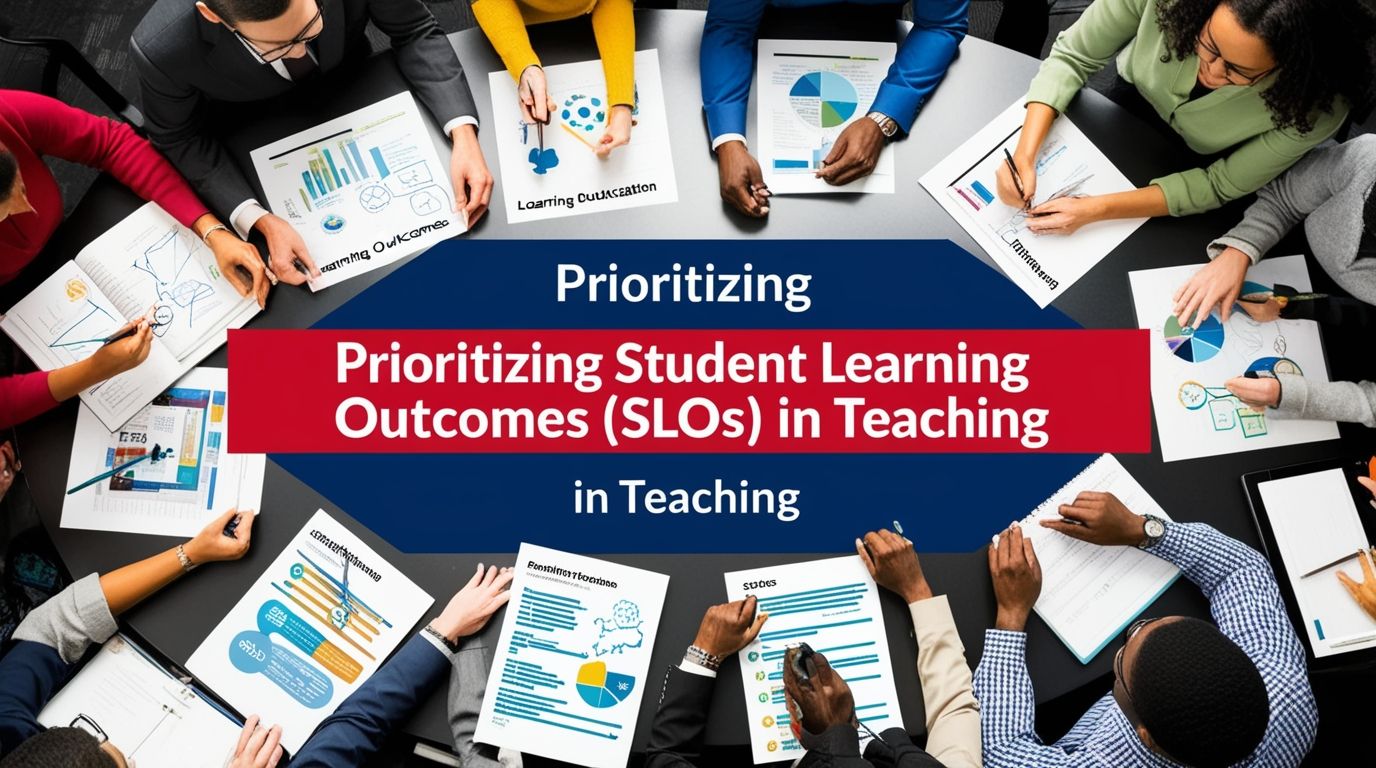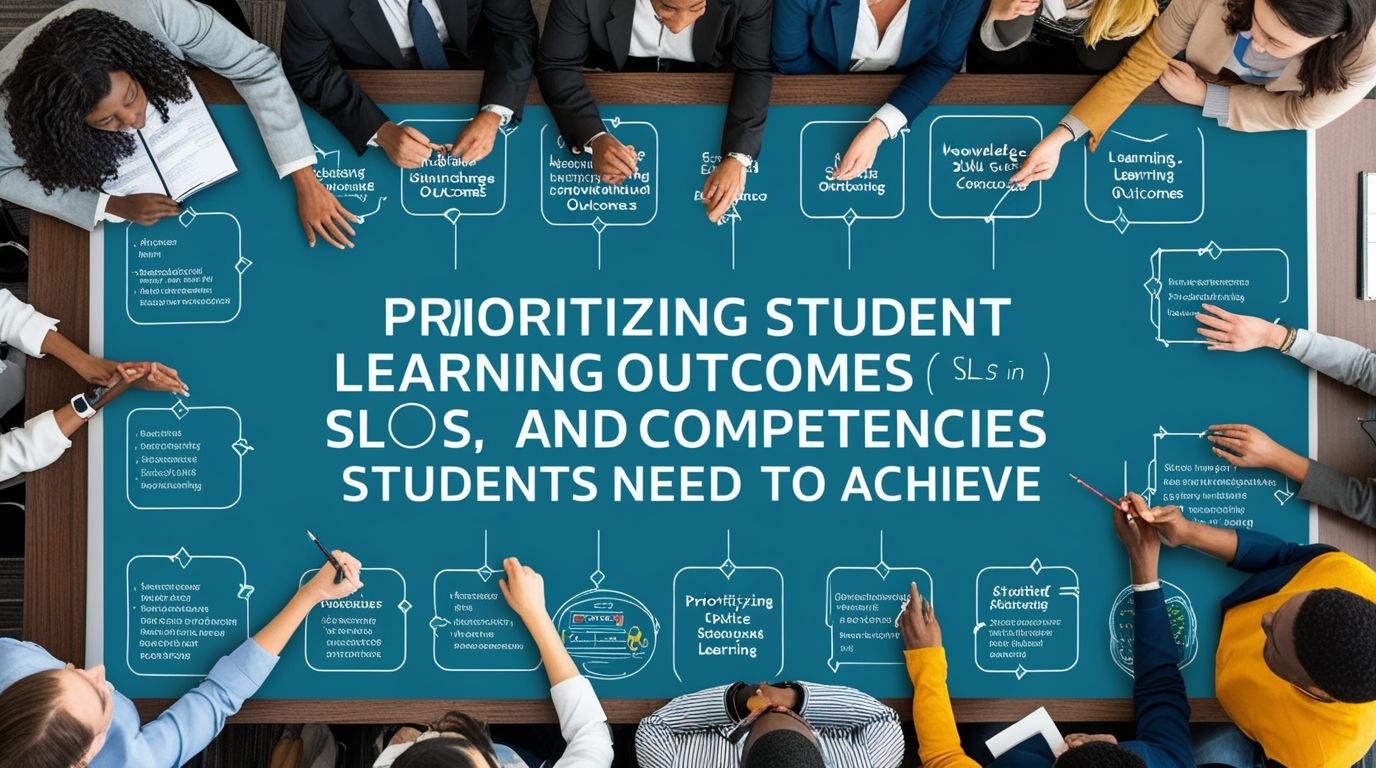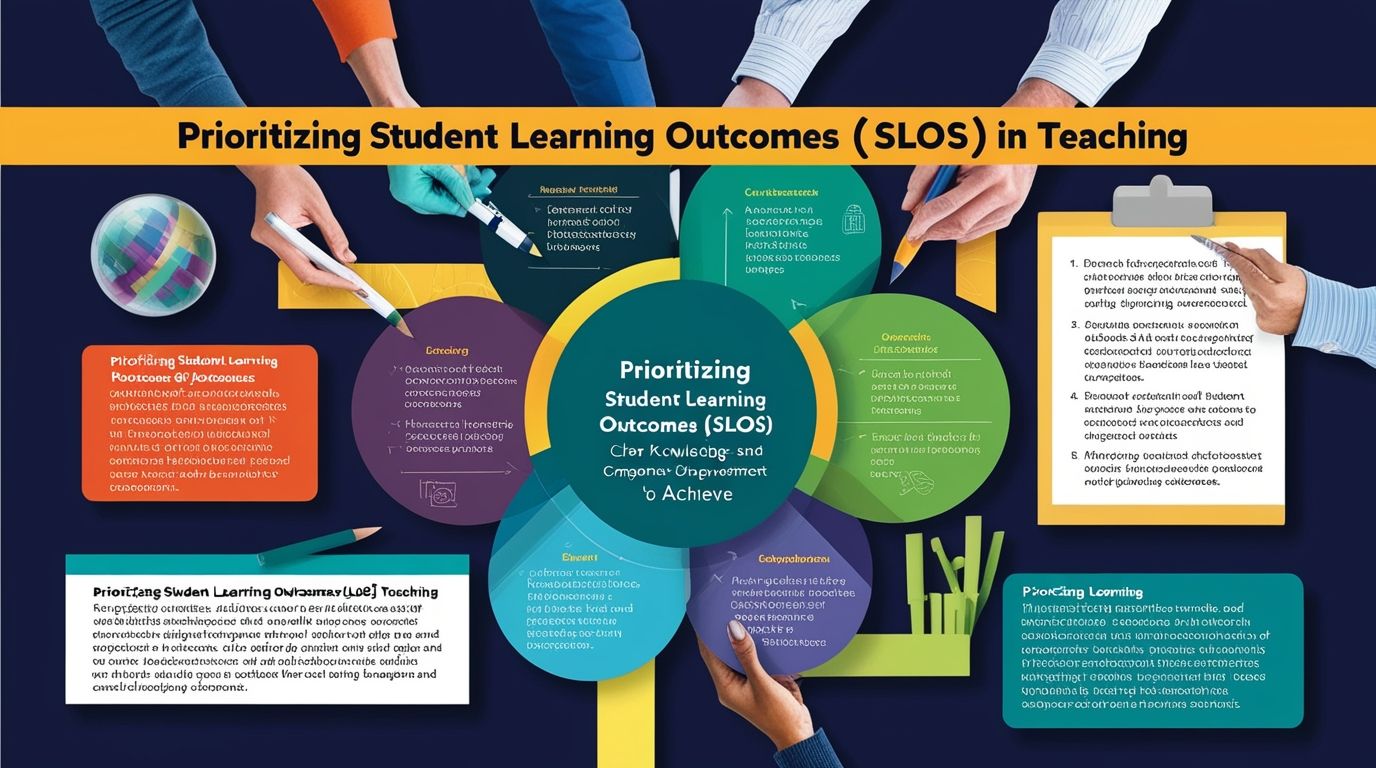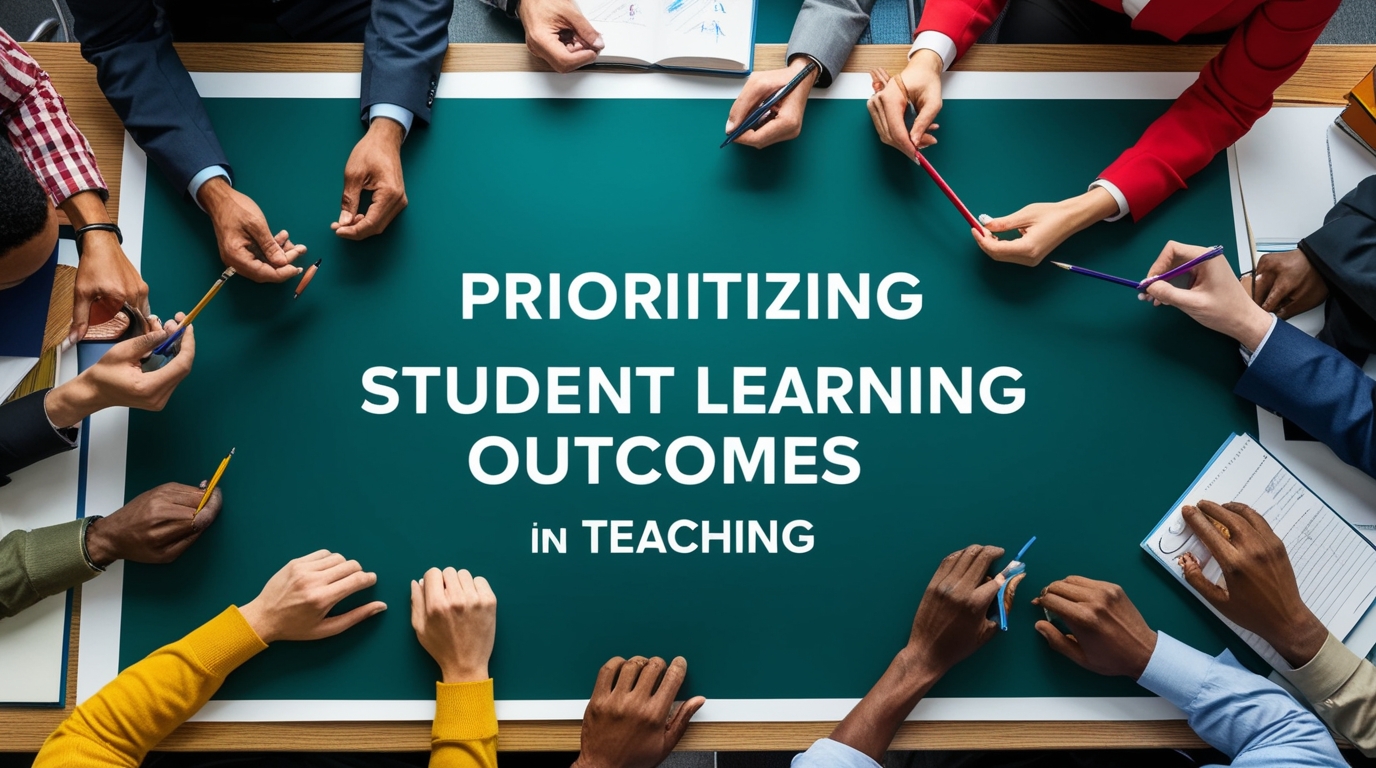Prioritizing SLOs in Teaching framework for what students should know, understand, and be able to do by the end of a course or program. Prioritizing SLOs ensures that educational activities aligned with the desired outcomes, enhancing the overall learning experience and ensuring that students achieve the necessary competencies. This article explores the importance of SLOs, strategies for prioritizing them in teaching, and the benefits of a focused approach to student learning.
Understanding Student Learning Outcomes (SLOs)
Prioritizing SLOs in Teaching student Learning Outcomes are explicit statements that describe the knowledge, skills, attitudes, and behaviors that students expected to demonstrate upon completion of a course or program. SLOs serve as a guide for both instructors and students, providing a clear direction for the teaching and learning process. They are typically categorized into three domains:
- Cognitive Domain: Involves intellectual skills such as knowledge, comprehension, application, analysis, synthesis, and evaluation.
- Affective Domain: Involves attitudes, values, and feelings, including motivation, empathy, and appreciation.
- Psychomotor Domain: Involves physical skills and the ability to perform tasks that require coordination and dexterity.

Importance of Prioritizing SLOs
Prioritizing SLOs in teaching is crucial for several reasons:
- Clarity and Focus: Prioritized SLOs provide a clear focus for instruction, helping both teachers and students understand the primary goals of the course.
- Alignment: Ensuring that all teaching activities, assessments, and resources aligned with the SLOs promotes coherence and consistency in the learning experience.
- Assessment and Accountability: SLOs serve as a basis for evaluating student performance and the effectiveness of the teaching process, facilitating accountability and continuous improvement.
- Student-Centered Learning: Prioritizing SLOs supports a student-centered approach to education, emphasizing the achievement of meaningful learning outcomes rather than merely covering content.
Strategies for Prioritizing SLOs
Prioritizing SLOs involves several key strategies:
- Identify Core Competencies: Focus on the essential knowledge, skills, and attitudes that students must acquire. These core competencies should align with the broader goals of the course or program and the needs of the students.
- Involve Stakeholders: Engage faculty, students, and other stakeholders in the process of defining and prioritizing SLOs. This collaborative approach ensures that the outcomes are relevant, comprehensive, and aligned with institutional goals.
- Use Bloom’s Taxonomy: Utilize Bloom’s Taxonomy to classify and organize SLOs according to different levels of cognitive complexity. This helps in prioritizing outcomes that promote higher-order thinking and deeper learning.
- Align with Standards: Ensure that SLOs are aligned with national, state, or institutional standards and benchmarks. This alignment ensures that the outcomes meet external requirements and expectations.
- Integrate Across the Curriculum: Prioritize SLOs that can integrated across multiple courses or programs, promoting interdisciplinary learning and reinforcing key competencies throughout the students’ educational journey.
- Regular Review and Revision: Continuously review and revise SLOs based on feedback, assessment data, and emerging trends in the field. This iterative process ensures that the outcomes remain relevant and effective.
Implementing SLOs in Teaching
Effective implementation of SLOs requires careful planning and execution:
- Curriculum Mapping: Create a curriculum map that outlines where and how each SLO will be addressed within the course or program. This visual representation helps ensure comprehensive coverage and alignment.
- Instructional Design: Design instructional activities, materials, and assessments that are directly aligned with the prioritized SLOs. This alignment ensures that all aspects of the teaching process are focused on achieving the desired outcomes.
- Formative and Summative Assessment: Use a combination of formative and summative assessments to measure student progress toward the SLOs. Formative assessments provide ongoing feedback, while summative assessments evaluate overall achievement.
- Feedback and Reflection: Provide regular feedback to students on their progress toward achieving the SLOs. Encourage self-reflection and goal-setting to help students take ownership of their learning.
- Professional Development: Invest in professional development for faculty to enhance their understanding of SLOs and effective strategies for prioritizing and implementing them in teaching.

Benefits of Prioritizing SLOs
Prioritizing SLOs in teaching offers numerous benefits:
- Improved Student Achievement: Clear and focused SLOs help students understand what expected of them, leading to higher levels of achievement and success.
- Enhanced Teaching Effectiveness: Teachers can design more effective and targeted instructional activities and assessments, resulting in improved teaching practices and student outcomes.
- Greater Accountability: SLOs provide a basis for evaluating the effectiveness of the teaching process and holding educators accountable for student learning.
- Increased Engagement and Motivation: When students see the relevance and purpose of their learning activities, they are more likely to be engaged and motivated.
- Continuous Improvement: The process of prioritizing and assessing SLOs promotes continuous improvement in both teaching and learning, ensuring that educational practices remain effective and up-to-date.

Challenges and Considerations
While prioritizing SLOs offers many benefits, it also presents some challenges:
- Time and Resources: Developing, prioritizing, and implementing SLOs can be time-consuming and resource-intensive. Institutions must allocate sufficient time and resources to support this process.
- Balancing Breadth and Depth: It can be challenging to strike a balance between covering a broad range of content and achieving depth in key areas. Prioritizing core competencies and integrating them across the curriculum can help address this challenge.
- Consistency and Alignment: Ensuring consistency and alignment across different courses and programs requires coordination and collaboration among faculty and administrators.
- Adapting to Diverse Needs: Students have diverse backgrounds, abilities, and learning styles. Prioritizing SLOs must take into account these differences and provide flexible and inclusive approaches to teaching and assessment.
Conclusion
Prioritizing Student Learning Outcomes is essential for effective teaching and meaningful student learning. By focusing on clear, aligned, and relevant outcomes, educators can enhance student achievement, promote higher-order thinking, and support the holistic development of their students. The process of prioritizing SLOs requires careful planning, collaboration, and continuous improvement, but the benefits are well worth the effort. As educational institutions and teachers continue to prioritize SLOs, they will create more engaging, effective, and impactful learning experiences for their students.

I got good info from your blog
This all-in-one clock radio CD player is more than just an alarm—it’s a full media hub. Along with a traditional CD player, it features AM/FM radio, Bluetooth connectivity, and a wireless remote control. Dual alarms make it easy to set different wake times, while the large LED display ensures easy readability. With rich stereo sound and multiple playback options, it’s one of the best clock radios with CD player and Bluetooth functionality. Great for music lovers who value versatility in a radio alarm clock CD player setup.
You made a complex topic so easy to understand. Great job!
F*ckin’ tremendous things here. I’m very glad to see your post. Thanks a lot and i am looking forward to contact you. Will you please drop me a e-mail?
After all, what a great site and informative posts, I will upload inbound link – bookmark this web site? Regards, Reader.
Only wanna state that this is very useful, Thanks for taking your time to write this.
This is really interesting, You’re a very skilled blogger. I’ve joined your feed and look forward to seeking more of your excellent post. Also, I’ve shared your site in my social networks!
Thanks for another magnificent post. Where else could anybody get that type of information in such a perfect way of writing? I have a presentation next week, and I’m on the look for such information.
It’s actually a great and useful piece of info. I am happy that you just shared this useful info with us. Please keep us informed like this. Thank you for sharing.
I really enjoy reading on this website , it has got good articles.
Cool blog! Is your theme custom made or did you download it from somewhere? A design like yours with a few simple adjustements would really make my blog jump out. Please let me know where you got your design. Many thanks
I respect your work, regards for all the informative articles.
Very good written information. It will be beneficial to anyone who employess it, including me. Keep doing what you are doing – looking forward to more posts.
This is very fascinating, You are a very skilled blogger. I have joined your rss feed and look ahead to in search of extra of your great post. Additionally, I’ve shared your site in my social networks!
Very well written post. It will be helpful to everyone who usess it, including myself. Keep doing what you are doing – can’r wait to read more posts.
Das New York-New York Hotel Las Vegas bietet nicht nur eine beeindruckende Außenfassade, sondern auch ein faszinierendes
Innendesign, das die berühmten Stadtteile New Yorks wie den Times Square und Central Park nachbildet.
Für diejenigen, die das Nachtleben genießen möchten, bietet das Hotel mehrere Bars und Nachtclubs, darunter die berühmte Coyote Ugly Saloon und die Bar at Times Square, die eine lebhafte Atmosphäre und Unterhaltung bieten.
Neben der aufregenden Achterbahn bietet das Hotel auch
eine Vielzahl von Shows und Performances. Ein Highlight ist der Big
Apple Coaster, eine Achterbahn, die um das Hotel herumführt und einen beeindruckenden Blick auf den Las Vegas Strip bietet.
Das New York-New York Hotel Las Vegas bietet eine Fülle von Unterhaltungsmöglichkeiten, die sicherstellen, dass kein Besuch langweilig wird.
U-Bahn-Station Brooklyn Bridge – City Hall ist 2,5 km weit weg von dieser Unterkunft, während National September 11 Memorial und Museum 3 km entfernt liegt.
Rochdale Park ist 2,4 km weit weg von dieser Unterkunft, während Resorts World Casino New York City
2,7 km entfernt liegt. Baseballstadion Citi Field ist 2,3 km
weit weg von dieser Unterkunft, während Arthur Ashe Stadion 2,4 km entfernt
liegt.
Der Hauptcasinobereich ist beispielsweise nach dem Times Square
benannt, und die Restaurants sind so gestaltet, dass sie das Flair von Greenwich Village widerspiegeln. Diese Statue, zusammen mit anderen Elementen wie
einer Nachbildung des New York Harbor und verschiedenen anderen Denkmälern, verstärkt das Gefühl,
sich in einer Miniaturversion von New York City zu befinden. Besonders hervorzuheben ist die 46 Meter
hohe Replik der Freiheitsstatue, die majestätisch am Eingang des Hotels steht und sowohl bei Tag als auch bei
Nacht ein beliebtes Fotomotiv bietet.
References:
https://online-spielhallen.de/casino-of-gold-freispiele-ihr-weg-zu-kostenlosen-spielrunden/